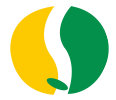With the turn of spring and summer, the fabric market has also ushered in a new round of sales boom. During in-depth frontline research, we found that the order intake situation in April this year was basically the same as in the previous period, showing a steady increase in market demand. Recently, with the gradual advancement of the production rhythm of the weaving industry, the market has shown a series of new changes and trends. The best-selling varieties of fabrics are changing, the delivery times of orders are also changing, and the mentality of textile people has also undergone subtle changes.
1. New hot-selling fabrics appear
From the product demand side, the overall demand for related fabrics such as sun protection clothing, workwear, and outdoor products is on the rise. Nowadays, the sales of sun protection nylon fabrics have entered the peak season, and many clothing manufacturers and fabric wholesalers have placed large orders. One of the sunscreen nylon fabrics has increased sales. The fabric is woven on a water-jet loom according to 380T specifications, and then undergoes pretreatment, dyeing, and can be further processed such as calendering or crepe according to customer requirements. The cloth surface after being made into clothing is delicate and shiny, and at the same time effectively blocks the intrusion of ultraviolet rays, giving people a refreshing feeling both visually and tactilely. Due to the novel and unique design style of the fabric and its light and thin texture, it is suitable for making casual sun protection clothing.
Among the many products in the current fabric market, stretch satin is still the sales champion and is deeply favored by consumers. Its unique elasticity and gloss make stretch satin widely used in many fields such as clothing and home furnishings. In addition to stretch satin, a number of new hot-selling fabrics have emerged on the market. Imitation acetate, polyester taffeta, pongee and other fabrics have gradually attracted market attention due to their unique performance and fashion sense. These fabrics not only have excellent breathability and comfort, but also have good wrinkle resistance and wear resistance, and can meet the needs of different consumers.
2.Order delivery time eased
In terms of order delivery, with the successive delivery of early orders, the overall production of the market has eased compared with the previous period. Weaving factories are currently in high-load production, and gray fabrics that were not available in time in the early stage are now in sufficient supply. In terms of dyeing factories, many factories have entered the centralized delivery stage, and the frequency of inquiry and order placement for conventional products has narrowly decreased. Therefore, the delivery time has also eased, generally around 10 days, and individual products and manufacturers require more than 15 days. However, considering that the May Day holiday is approaching, many downstream manufacturers have the habit of stocking up before the holiday, and the market buying atmosphere may heat up by then.
3.Stable production load
In terms of production load, early seasonal orders are being completed gradually, but the delivery time of subsequent foreign trade orders is relatively long, which makes factories cautious in increasing production load. Most factories are currently operating mainly to maintain production levels, that is, to maintain current production levels. According to the sample data monitoring of Silkdu.com, the current operation of weaving factories is relatively strong, and the factory load is stable at 80.4%.
4.Fabric prices are rising steadily
In terms of high fabric prices, fabric prices have shown an overall upward trend since the beginning of this year. This is mainly due to the combined effect of multiple factors such as rising raw material prices, increased production costs, and increased market demand. Although the price increase has brought certain pressure to merchants, it also reflects the market’s increasing requirements for fabric quality and performance.
5.Summary
To sum up, the current fabric market is showing a steady and upward trend. Hot-selling products such as nylon and elastic satin continue to lead the market, and emerging fabrics are also gradually emerging. As consumers continue to pursue fabric quality and fashion sense, the fabric market is still expected to maintain a steady development trend.
Post time: Apr-23-2024
